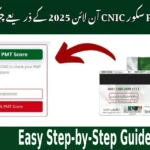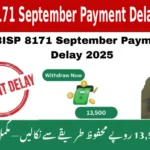
Introduction
Many beneficiaries eagerly await the start of payments via the 8171 card, a convenient and secure way to receive financial assistance. Understanding when beneficiaries will start receiving payments via the 8171 card is essential to help plan finances and avoid confusion. In this article, we will explore everything about the 8171 card payment timeline, how it works, and what beneficiaries need to know.
What Is the 8171 Card and Its Purpose?
The 8171 card is a government-issued payment card designed to streamline the distribution of financial benefits such as social welfare, pensions, and other assistance schemes. Instead of traditional cash payments or cheques, beneficiaries receive their money directly on this card, making transactions simpler and safer.
- Issued by designated banks in collaboration with government agencies.
- Mainly used for social security payments, pension disbursements, and other benefits.
- Offers beneficiaries easy access to funds through ATMs, POS machines, and online transactions.
When Will Beneficiaries Start Receiving Payments via the 8171 Card?
The timeline for when beneficiaries start receiving payments via the 8171 card varies depending on several factors, including the issuance process, government schedules, and banking procedures.
- Initial Activation Period: After receiving the card, beneficiaries usually need to activate it, which can take up to a few days.
- Government Disbursement Schedule: Payments are typically credited on specific dates as per the welfare or pension program calendar.
- Bank Processing Time: Once the payment is credited, it might take 1 to 2 business days for the amount to become accessible.
In general, beneficiaries can expect to start receiving payments via the 8171 card within 1 to 3 weeks after the official announcement or disbursement start date.
How Beneficiaries Can Check Their 8171 Card Payment Status
Knowing the status of payments is crucial. Beneficiaries can check if the payment has been credited to their 8171 card using:
- Official Government Portals: Many social welfare programs provide online tracking.
- Bank Mobile Apps: Beneficiaries can log into the app linked to their 8171 card to view transactions.
- SMS Alerts: Notifications are often sent to the registered mobile number once payment is deposited.
- Customer Service Helplines: Calling the bank or government helpline can provide updated payment status.
Important Steps for Beneficiaries to Ensure Smooth Payment Processing
To receive payments timely on the 8171 card, beneficiaries should:
- Activate the card immediately after receipt.
- Register and verify their mobile number linked to the card.
- Keep their personal information up to date with the issuing bank.
- Regularly check their balance and transaction history.
- Report lost or stolen cards promptly to avoid payment issues.
Benefits of Receiving Payments via the 8171 Card
The switch to the 8171 card brings multiple benefits to beneficiaries:
- Security: Eliminates the risk of carrying cash or losing cheques.
- Convenience: Access funds anytime from ATMs or shops.
- Transparency: Clear tracking of payment dates and amounts.
- Speed: Faster processing with direct credit to the card.
- Financial Inclusion: Encourages the use of formal banking for government benefits.
Common Issues Faced by Beneficiaries and How to Resolve Them
While the 8171 card system is designed to be smooth, some beneficiaries might face challenges such as:
- Delayed payments due to banking or administrative hold-ups.
- Activation problems due to incorrect registration details.
- Technical glitches in accessing the funds online or via ATMs.
To resolve these:
- Contact the issuing bank immediately.
- Verify that registration details match official records.
- Reach out to the relevant government department for assistance.
Future Outlook: Will Payment Frequency or Method Change?
Currently, payments via the 8171 card follow monthly or quarterly schedules as per the program. Going forward, there may be enhancements such as:
- More frequent payment disbursements.
- Integration with mobile wallets and digital banking.
- Stronger security features for authentication.
- Expanded use for other government and private benefit services.
These developments aim to make the payment process even more beneficiary-friendly.
Frequently Asked Questions (FAQs)
1. When will beneficiaries start receiving payments via the 8171 card after card issuance?
Beneficiaries typically start receiving payments within 1 to 3 weeks after the card is issued and activated, depending on the government payment schedule.
2. How can I activate my 8171 card after receiving it?
Activation can usually be done via an ATM, bank branch, or by calling the customer service number provided with the card.
3. What should I do if my payment via the 8171 card is delayed?
Contact your issuing bank or the relevant government department to check the payment status and resolve any issues.
4. Can I use my 8171 card for transactions other than receiving benefits?
Yes, the 8171 card can often be used like a debit card for withdrawals and purchases, depending on the issuing bank’s terms.
5. How will I know when a payment is credited to my 8171 card?
You will receive an SMS alert on your registered mobile number and can check your balance via mobile banking or ATM.
Conclusion
Knowing when beneficiaries will start receiving payments via the 8171 card is vital for financial planning and peace of mind. Payments typically begin within a few weeks of card issuance and activation, following government disbursement schedules. The 8171 card offers a secure, convenient, and efficient way to access benefits, making it a significant improvement over older payment methods. By understanding how the system works and taking necessary steps to activate and monitor the card, beneficiaries can ensure smooth access to their funds.

